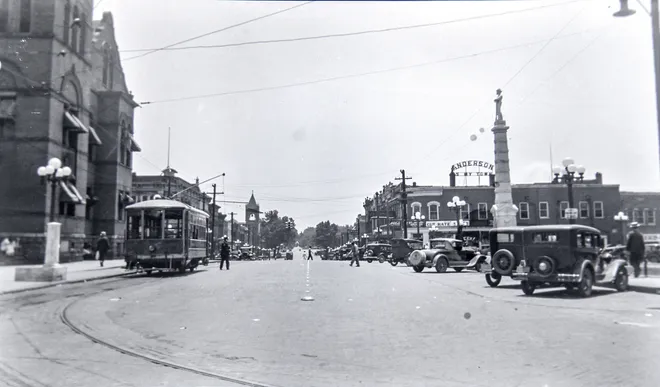Anderson, South Carolina, is a city that beckons with its rich history and undeniable charm. From its time as a small trading post to its vibrant present-day culture, Anderson’s history is one of resilience, growth, and community spirit. Join us on a journey through time as we trace the city’s roots and explore its rich heritage.
Early History
The story of Anderson began long before it was officially incorporated as a city. The area was originally home to the Cherokee people, who were later joined by European settlers in the 18th century. Named in honor of General Robert Anderson, a significant figure in the Revolutionary War, Anderson was established in December 1826 and formally incorporated through legislative action on December 19, 1833.
The Civil War and Reconstruction Era
Anderson’s strategic location along the railroad made it a key target during the Civil War. In 1865, the city was heavily damaged by Union forces during the Battle of Anderson. Despite the devastation, Anderson began to rebuild during the Reconstruction era, laying the foundation for its future growth and development.
Industrial Revolution
The late 19th and early 20th centuries brought significant growth to Anderson, thanks in large part to the textile industry. The city became known for its thriving mills and factories, attracting workers from far and wide. This period of industrial expansion laid the groundwork for Anderson’s reputation as a center of industry and innovation. Anderson has a history of innovation, being the first city in the South to have an unlimited supply of electric power. In fact,
Anderson County was home to the world’s inaugural electrically operated cotton gin in 1897. This spirit of innovation and progress has been a hallmark of Anderson’s development over the years, shaping it into the vibrant city it is today.
Modern Era
In the decades following World War II, Anderson underwent a significant transformation, experiencing a period of rapid growth and prosperity. The city’s economy diversified, with new industries emerging as major drivers of growth. Among these were automotive manufacturing and healthcare, which played pivotal roles in shaping Anderson’s economic landscape. The growth of these industries not only provided new job opportunities for residents but also contributed to the overall development and modernization of the city. This period marked a turning point in Anderson’s history, setting the stage for its continued growth and prosperity in the years to come.
Innovations and Progress
One of the key figures in Anderson’s innovative history was William Whitner, who saw the potential of electricity and its application in the city’s development. He established the Anderson Water, Light, and Power Co. in 1893, assisted by local officials. The firm’s dam and power station at High Shoals were constructed to the highest standards, described as solid granite, and meticulously crafted, as reported by the Anderson Intelligencer. The newspaper also noted that the company electrified his printing presses, a mattress factory, a sausage-making facility, and the equipment at the Anderson Cotton Mill. This transformation led to Anderson being dubbed “The Electric City” by the Charleston News and Courier.
However, the path to becoming the Electric City was not without its challenges. The Portman Shoals Dam and power plant faced problems, shutting down for nearly a year in 1901.
The site faced challenges, including floods, dam failures, explosions, and fires, making the management of the dynamos hazardous. By 1912, the Anderson Water, Power, and Electric Co. had sold its assets for almost $1 million to James B. Duke’s Southern Power Co., which improved voltage and safety protocols, guaranteeing a more dependable and safe power distribution for the city.
Today, Anderson continues to embody its innovative spirit, fostering a vibrant community that not only cherishes its rich heritage but also looks ahead to a bright and sustainable future. Anderson’s thriving cultural scene, dynamic business environment, and a strong sense of community are all testament to its forward-thinking approach. As the city continues to evolve and grow, it remains dedicated to preserving its past while embracing new opportunities for growth and progress.






